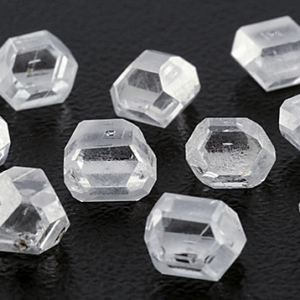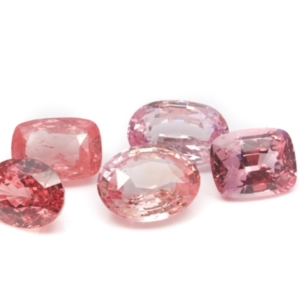Cassiterite stone – properties, virtues & benefits
Like all stones, cassiterite stones in their natural crystalline form have undeniable advantages in lithotherapy, an origin, a history, a weight, a dimension and a composition all their own.
CHARACTERISTICS OF CASSITY
- Chakra: Root.
- Properties: Anchoring, protection, stability.
- Astrology: Saturn.
- Zodiac: Capricorn.
- Elements: Earth.
- Colors: Brown, black.
- Hardness: 6-7 (Mohs scale).
- Chemical Formula: SnO2.
- Associated god: Pluto.
PIERRE CASSITÉRITE – HIS HISTORY
The origin of cassiterite dates back to 1780, when it was first discussed by Bergmann. In 1797, Martin Heinrich Klaproth carried out the first chemical analysis of the stone. It was described and named in 1832 by François SulPice Boudin, who chose the name in reference to the Greek word “kassiteros” meaning tin, the stone’s main component. Friedrich Becke studied in depth the geometric and optical characteristics of this unique stone.
The name cassiterite is linked to the island “Cassiterides”, which is said to have been home to tin oxide ores, but is sometimes considered mythical. Mineralogists appreciate cassiterite’s beautiful extracts, which often feature defined shapes and multiple macles. This stone is also used for optical polishing.
Cassiterite is also known as tin dioxide and is used as an opacifying agent in the manufacture of glass pastes, enamels and mineral paints. It is also a Pigment used in ceramics, notably in alabaster and ruby red Pigments in ceramic paints.
CASSITERITE STONE – ITS ORIGIN AND COMPOSITION
Cassiterite is a group of minerals containing tin dioxide mainly as oxides, but with traces of other metallic elements such as Fe, Ta, Nb, Zn, W, Mn, Sc, Ge, In, Ga, etc.
These minerals are found mainly in acid igneous rocks, such as granites and associated pegmatites, where they crystallize in hot, moderate hydrothermal veins, such as veins and greisens. In high-temperature deposits, cassiterite is often associated with other minerals such as tungsten, molybdenite, tourmaline and topaz, as well as with common minerals such as quartz and orthoclase. In vein-type ore, cassiterite is often associated with scheelite and misPickel, as well as mineral fluids such as fluorite, apatite, topaz and wolframite.
Although cassiterite is present in some rhyolite lava flows, as in Mexico’s Durango volcano, it is rarely found in contact metamorphic sediments.
Cassiterite is a robust, heavy and dense mineral that is often found near eroded rocks and can be found as alluvial tin in sands. Countries such as Malaysia, Indonesia and Thailand mine alluvial, river and marine deposits, which are currently the largest and most profitable in the world.
.
The largest cassiterite crystals, measuring around 10 to 15 cm, are found in famous locations such as the Horny Slavkov deposit in the Czech Republic and Minas Gerais in Brazil. Fine crystals are usually associated with albite and spodumene in Cornwall and the Ore Mountains. Quality crystals are also found in other countries such as Portugal, France, Italy, the Czech Republic, Myanmar and Brazil. Bolivia also has a cassiterite mine at Villoco that produces gems of this type.
The dominant color of cassiterite is usually brown to black, but some stones can have lighter tones. The color depends on the impurities contained in its structure. Cassiterite is one of the densest minerals found on Earth, with a density ranging from 6.7 to 7.1 on the Mohs scale.

CASSITERITE STONE – VERTIES AND PROPERTIES
Cassiterite has several virtues, notably for deep meditation and for rebalancing the energy flows of the chakras, particularly the root chakra. Its most powerful property is the ability to relieve feelings of sadness and suffering when mourning the loss of a loved one. It can also help calm divine light and facilitate shamanic practices.
Cassiterite creates doorways for inner, interdimensional travel, reducing negative thoughts and connecting consciousness to the cosmic source. It facilitates the soul’s entry into the sPiritual world during meditation and helps to better understand the importance of life changes.
These virtues make cassiterite stone a useful tool at different times in life.
PSYCHOLOGICAL CASSITY
Cassiterite is known for its psychological benefits, providing stability and grounding. It boosts self-confidence and helps overcome fears and anxieties, while helPing to better manage stress and develop perseverance in the face of life’s challenges.
It is associated with personal transformation by helPing to recognize and break negative patterns to promote growth and evolution. It stimulates creativity and insPiration, encouraging the exploration of new ideas and the making of informed decisions.
Cassiterite is also a protective stone that repels negative energies and purifies the aura. It supports emotional balance, making it easier to manage emotions and develop compassion for oneself and others.
PHYSICAL CASSITY
Cassiterite is known for its healing and beneficial properties for the body, although there is no scientific evidence to back up these claims. According to some beliefs, the stone can help improve physical health in a number of ways.
It is considered a stone that strengthens the immune system, helPing to protect against infection and disease, and revitalizing the body by stimulating energy and the circulation of vital energy.
Cassiterite is also associated with hormonal balance, helPing to regulate hormone levels in the body and relieve symptoms associated with hormonal imbalances. It also helps strengthen bones and prevent problems such as osteoporosis and fractures.
The stone is sometimes used to protect the body against the harmful effects of electromagnetic radiation, particularly that emitted by electronic devices.
It’s important to remember that the use of stones and crystals for physical well-being should not replace appropriate medical treatment. It is always advisable to consult a medical professional to treat health problems.

NATURAL CASSITERITE – CLEAN AND RECHARGE
Cleaning and recharging cassiterite stone is important to maintain its energy and beneficial properties. Here are a few steps to clean and recharge your stone:
- Cleaning:
- Water: Place cassiterite under running water for a few minutes to eliminate accumulated negative energies. Be sure not to use water that’s too hot, as this could damage the stone. Then dry carefully with a soft cloth.
- Earth: Bury the stone in the earth for a few hours or overnight to purify it. Be sure to place it in a cloth bag to prevent dirt from adhering to the stone.
- Fumigation: pass the cassiterite through the smoke of white sage, palo santo or incense to cleanse it of negative energies. Do this for a few minutes, making sure the smoke envelops the stone.
- Reloading:
- Moon: Expose the cassiterite stone to moonlight, preferably during a full or waxing moon, to recharge it. Leave the stone outside or on a windowsill overnight.
- Sunlight: You can also expose the stone to sunlight for a few hours to recharge it. However, avoid leaving it in the sun for too long, as this could alter its colors.
- Crystalline amas: Place cassiterite on a quartz or amethyst cluster for a few hours to recharge. These stones are reputed to amplify energy and revitalize other crystals.
Don’t forget to clean and recharge your cassiterite stone regularly, especially if you use it frequently for meditation, healing or protection sessions.
WHERE DOES THE NAME CASSITY COME FROM?
The name “cassiterite” comes from the ancient Greek “kassiteros” (κασσίτερος), meaning “tin”. Cassiterite is a mineral composed of tin oxide (SnO2), and is the main source of tin used to extract this metal. The name therefore reflects the nature and main use of this mineral in industry and metallurgy.
WHICH CHAKRA DOES CASSITRITE ACT ON?
Cassiterite acts primarily on the root chakra, also known as Muladhara or base chakra. This chakra is located at the base of the sPine and is associated with stability, grounding and emotional and physical security. By working on the root chakra, cassiterite helps to strengthen a sense of belonging, overcome fears and anxieties, and promote deep grounding to better manage life’s stresses and challenges.
WHICH ASTROLOGICAL SIGN IS ASSOCIATED WITH CASSITY?
Cassiterite is primarily associated with the astrological sign of Capricorn. Capricorn, an earth sign, is ruled by the planet Saturn, which is linked to structure, discipline and responsibility. The cassiterite stone complements these characteristics well, providing anchorage, stability and perseverance, making it a particularly beneficial stone for people born under this sign.
CASSITY STONE SUMMARY
Cassiterite is a tin mineral, a primary source of this metal in industry. It is composed mainly of tin dioxide (SnO2) and occurs as tetragonal crystals or granular masses. Cassiterite varies in color from black to brown, reddish or yellowish, and can be transparent to opaque.
.
Cassiterite is found in hydrothermal veins and granitic pegmatites, as well as in alluvial deposits where it can be recovered by simple extraction methods, such as washing. The main countries producing tin from cassiterite are China, Indonesia, Peru, Bolivia and Brazil.
.
Tin extracted from cassiterite is widely used in industry, notably in the production of solder and alloys with other metals, such as bronze. Tin also has anti-corrosion properties and is used to protect other metals. In addition, tin is used in the manufacture of electronic products, food packaging and batteries.
Cassiterite is also prized by mineral collectors for its brilliance, high density and distinctive crystals. However, cassiterite mining can cause environmental problems, including degradation of natural habitats and soil and water pollution. It is therefore essential to implement responsible mining practices to minimize these negative impacts.

